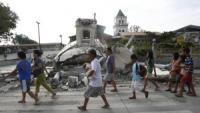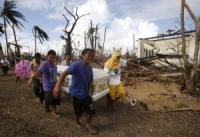MANILA, Philippines – The Asian Development Bank (ADB) is looking at increasing its loan assistance to the Philippines from $500 million to $850 million for the reconstruction of areas affected by typhoon Yolanda.
“We are considering to give additional $350 million by the end of the year,” ADB President Tahehiko Nakao said on Friday.
The multilateral financial institution has earlier given the Philippines a $23-million grant after the typhoon, $3 million of which were given on Nov. 14.
Nakao said the amount, used for the immediate needs of victims, came from the Asia Pacific Disaster Response Fund. The remaining $20 million will come the Japanese government’s Japan Fund for Poverty Reduction.
Despite the devastation caused by the strongest typhoon to hit earth this year, the ADB president said it will maintain its 7-percent growth forecast for the Philippines in 2013 and 6.1 percent next year.
“It will be offset by the very strong domestic demand in the country on the whole… there’s several quarters the growth that is higher than expected,” he said.
Business ( Article MRec ), pagematch: 1, sectionmatch: 1
Socioeconomic Planning Secretary Arsenio Balisacan earlier said regions of Eastern Samar, Panay and Central Visayas which were damaged by the typhoon contribute as much as 12 percent to the country’s overall economic growth. He said the typhoon may negatively affect the fourth quarter economic growth between .3 and .8 percent.
![]()



